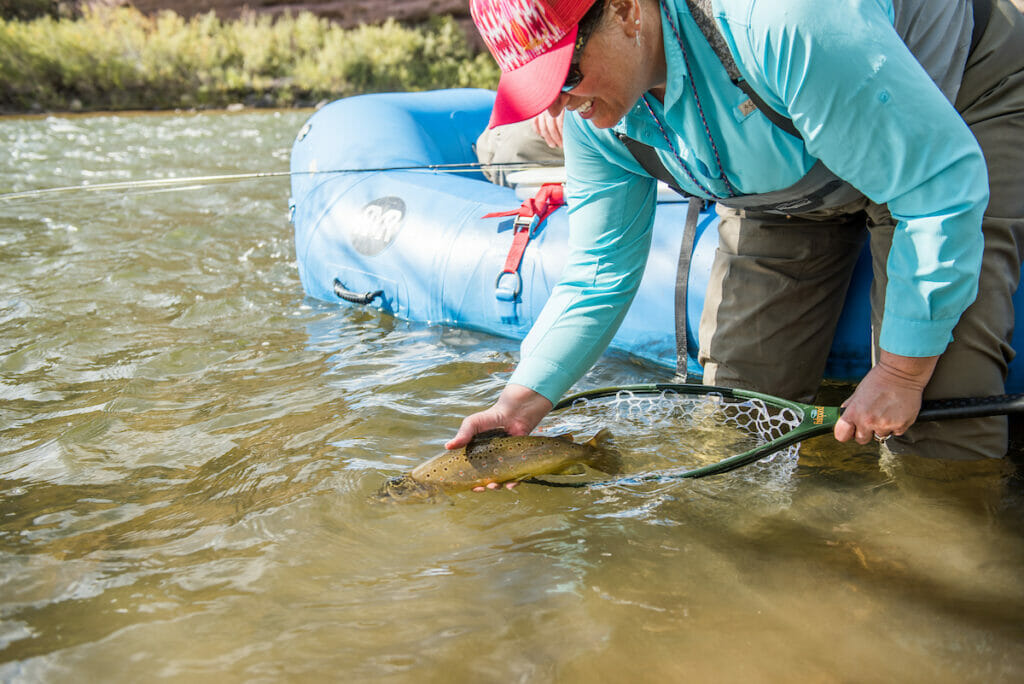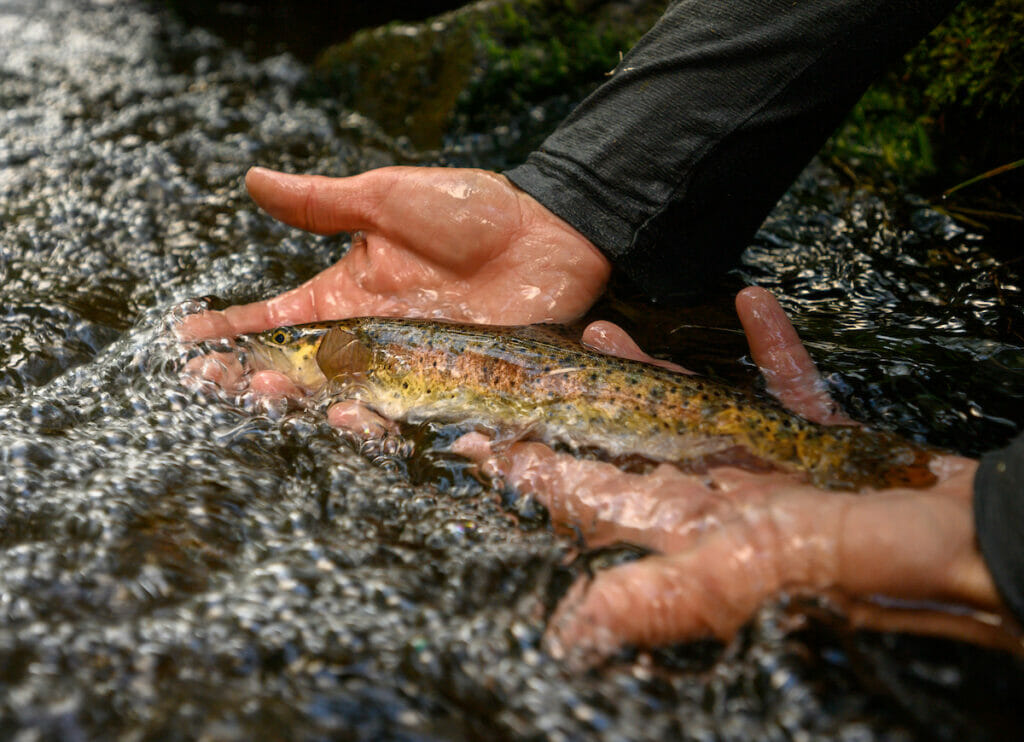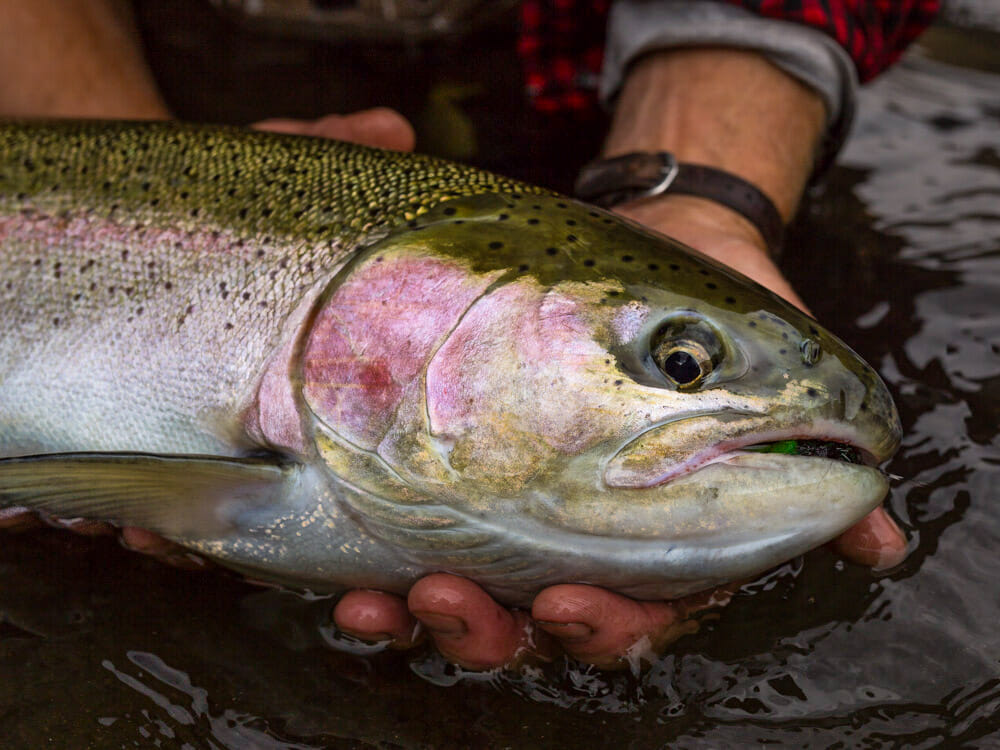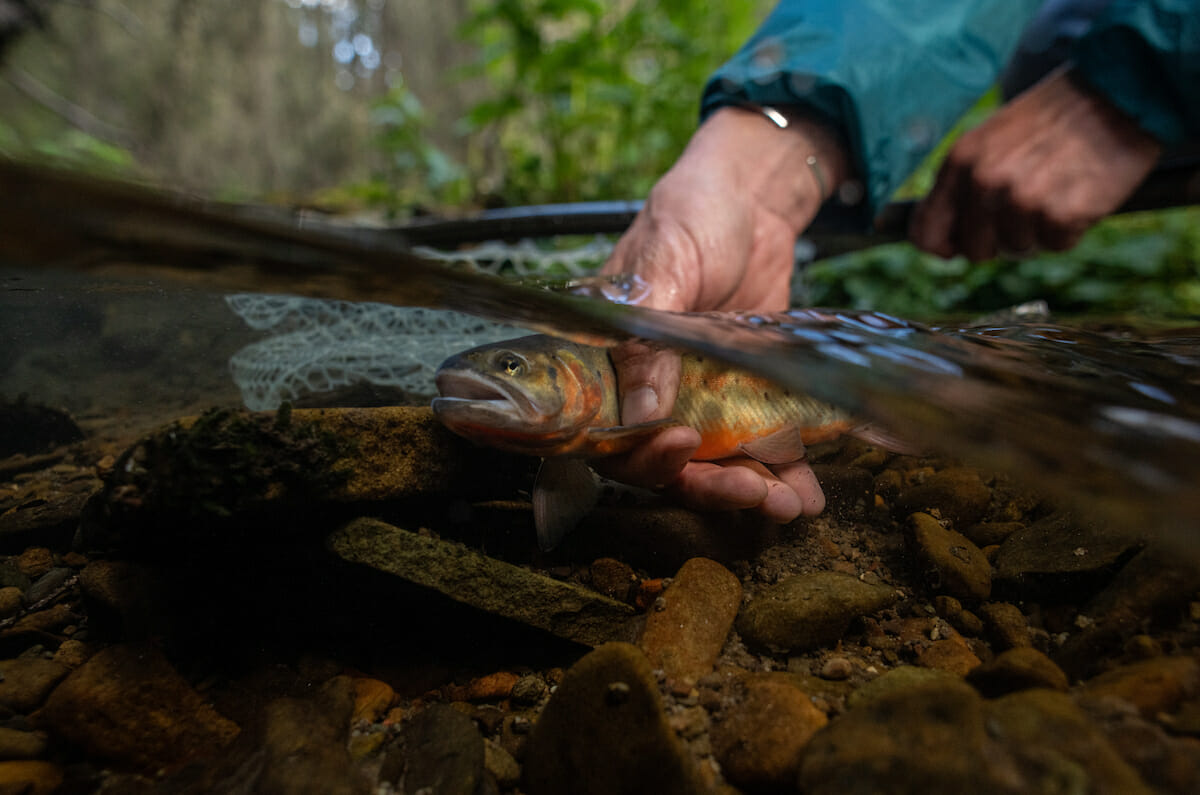Brian Hodge of TU’s Science team sits down with the facts to give us a not so simple answer.
How anglers interact with a trout or salmon fishery can be, in and of itself, a conservation consideration. Questions like “How much pressure does a river get?” “How many fish are kept?” and “How are released fish handled before they’re let go?” all factor into the sustainability of recreational fisheries. While quality habitat is, by far, the paramount consideration, if we pound the daylights out of the fish, we’re making an impact, even in a pristine environment. How much is too much? Well, it depends.
“Catch-and-release” is the crux. Done well, it helps to ensure game fish live on to fight another day and a fishing community can optimize and share a resource. Done poorly, it’s a misguided rationalization for some anglers to be unwitting game hogs. It’s just that simple.
What’s not so simple, however, is understanding exactly what constitutes good catch and release procedure. Most anglers want straightforward, black and white guidance that helps them navigate simple issues like, “How much time is okay to hold a fish out of water to take a photo, (if any)?” or “Should I use a net or not, and what kind?”

Brian Hodge of TU’s Science Team recently did us all a huge favor by gathering the results of 26 peer-reviewed, published, scientific studies that spanned decades of research and involved fisheries across the continent. In doing so, he created “An Annotated Bibliography of the Science on Catch and Release Angling of Salmonids.” The studies represented the best-available science and ranged from observing anglers’ habits to hooking fish in a controlled environment, timing air exposure intervals, tissue sampling and more.
I asked Hodge for a “top 10 list” of findings that we can etch in stone, or sew onto every set of wader suspenders, or at least print on little stickers to be applied to every drift boat and rod tube in the country to help show us the way. He smiled.
“We can say with absolute certainty that trout need water to breathe, but short of the obvious extremes it’s difficult to draw hard and fast rules about catch and release,” Hodge explained. “Probably the single-most important thing to consider is that it’s not just about one thing. The effects of catch and release angling vary and accumulate with numerous factors that can depend on one another. When you break it down, the literature offers us some clarity within specific contexts, but not necessarily rigid guidance that’s applicable across all scenarios.”

Water temperature at time of catch and release was shown to affect salmon and trout in many studies. In general, warmer temperatures result in more stress and lower survival. Research also suggests, though not unanimously, that how long you play a fish before landing it (fight time) and the size of the fish can also be factors. For example, at least one study found that post-release survival decreased as fight time increased, and a couple of studies suggested that large fish might be disproportionately affected by angling pressures.
“Science tells us that even the species of fish can matter,” Hodge described. “For example, we know that in general, mountain whitefish are less tolerant of warm water than rainbow trout, which are in turn less tolerant of warm water than brown trout. Knowing the biology, we can make reasonable predictions about the relative stress of these species when they’re caught and released in warm water.”
It’s also important to note that many of the studies showed the effects of being caught often played out hours or more after release. When that fish swims away out of your net, you cannot be 100% sure that it’s absolutely going to survive, no matter how good that makes you feel. And even if the fish does survive, it could potentially suffer from sub-lethal effects, such as reduced breeding success. One good way to limit your impact with certainty is to limit your catch.
As for the $64,000 question: Is it okay to air-expose fish to take photos, and for how long? Well, big surprise, but that depends. When we start layering all the factors on top of each other, things get complicated. The effect of temperature depends on species, the effect of fight time depends on temperature and species, and so on.

We’ll leave you hanging with that a bit while you consider your thoughts and actions around catch and release fishing but be sure to read the rest of Hodge’s findings and conclusions in the next issue of TROUT.



